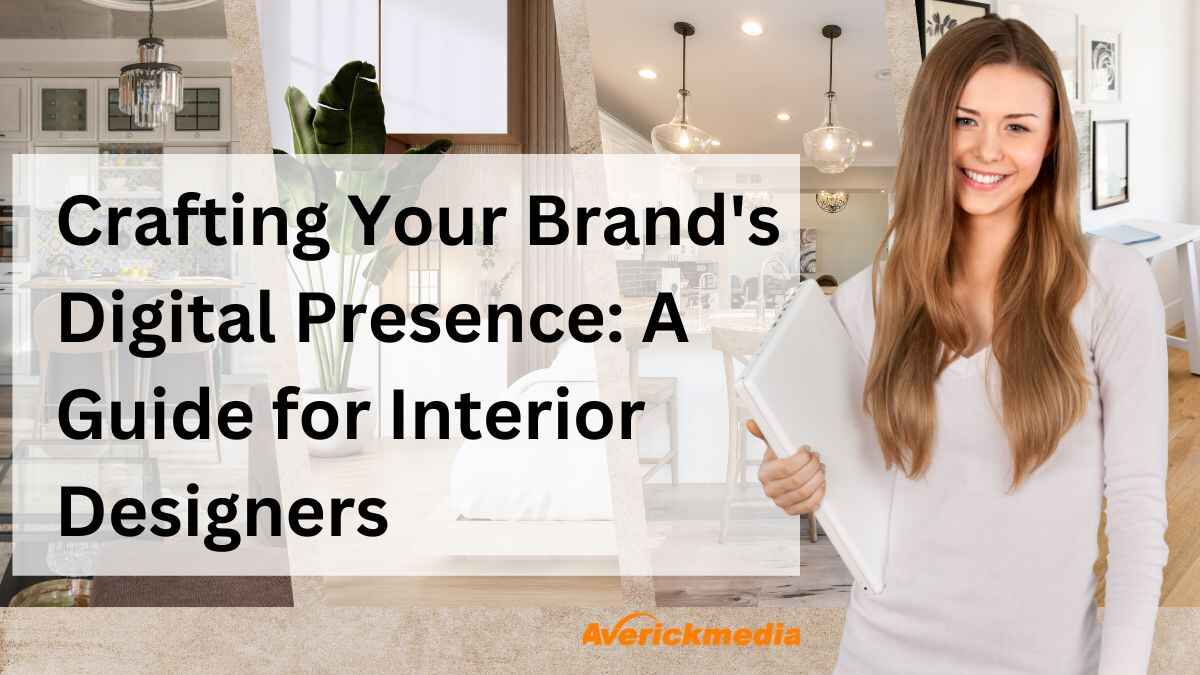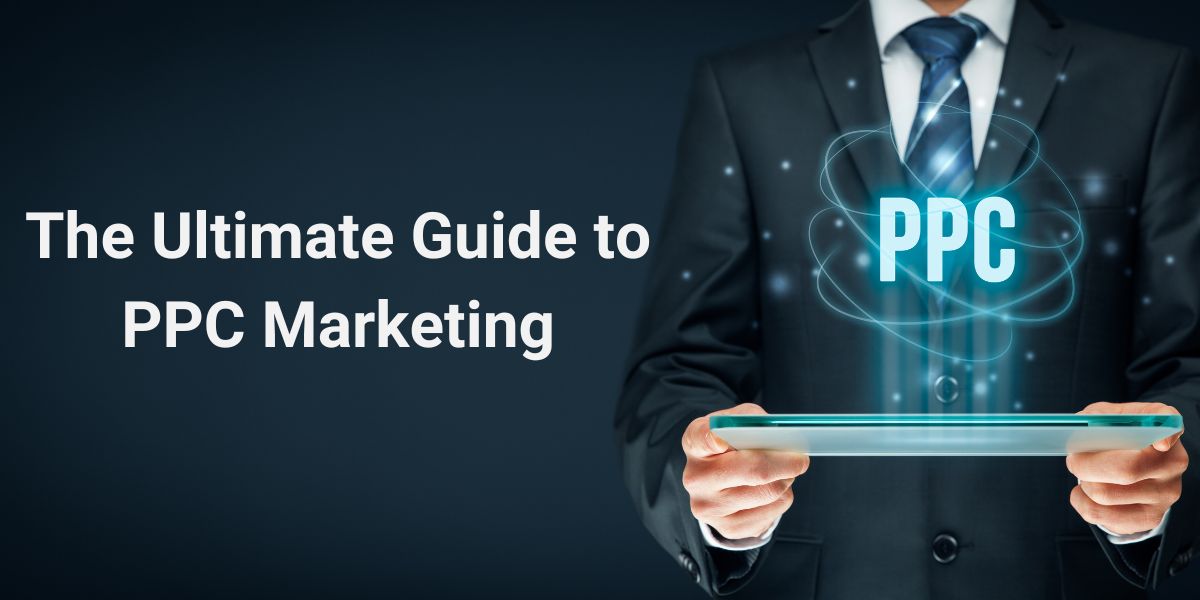Design Your Way to Marketing Success: A Guide for Interior Designers in the Digital Age
The interior design and home remodeling industry has changed a lot and become very important worldwide. Gone are the days when people relied solely on magazines and books for inspiration and updates. Instead, the internet has become the go-to place for interior design and home decor inspiration.

In this digital age, the success and even survival of interior design companies and service providers hinge on their adeptness in crafting effective digital marketing strategies. Online marketing has proven to be the most efficient and compelling means of promoting and showcasing products and services to a large audience of potential clients.
If you want to advance your interior design business using the internet, mobile apps, and new technologies, you're in the right place. We have 10 digital marketing ideas just for interior design businesses. These strategies will not only drive growth but also fortify your online presence, ensuring that your business thrives in this fast-paced digital age.
Table of Content :
Navigating the Digital Age: Why It Matters
In 2023, it's crucial for industries like interior design and home remodeling to adapt to the digital age. Embracing digital strategies is not just preferred, but necessary. The internet is where people seek information about everything, including interior design. As a savvy business owner, it's crucial to recognize that prospective customers are continually turning to Google for their daily dose of interior design inspiration. If you're starting an interior design business, the first thing to consider is, "How can we show our work to potential clients?" The answer is digital marketing. It helps you display your work, connect with potential clients, attract more visitors, and generate business leads.
Furthermore, look at the following statistics:
Consumer Behavior Shift: A whopping 87% of consumers now begin their product and service searches online. This includes individuals seeking interior design inspiration and services for home improvement projects.
Mobile Domination: Mobile devices are the gateway to the digital world. Over 60% of online searches now come from mobile devices. This statistic highlights the need for mobile-friendly websites and apps to engage with a growing audience.
Virtual Window Shopping: Before making a purchase, 81% of consumers conduct online research. This includes researching interior design ideas, products, and service providers.
E-commerce Surge: The market for interior design and home decor online shopping is growing rapidly. It's expected to grow by 9.8% annually from 2021 to 2028. If you don't have a strong online presence, you might miss a big part of this market.
Social Media Influence: A staggering 54% of social media users use platforms like Pinterest and Instagram to find inspiration for home improvement and interior design. Effective digital marketing leverages these platforms to reach potential clients.
Local Search is Paramount: Approximately 46% of Google searches have local intent, with users seeking services and products in their vicinity. This underscores the importance of local SEO and digital advertising for interior design businesses.
Consumer Trust: 70% of consumers trust reviews and recommendations from online sources. Building a positive online reputation through digital marketing is vital for gaining this trust.
Data-Driven Decisions: In the digital age, data is a valuable asset. Businesses that use analytics and data insights can make better marketing decisions and get better results.
10 Most Effective Interior Design Marketing Strategies for 2023
As we step into the more advanced technologies, it's crucial to adapt to evolving digital marketing strategies to stay ahead in the interior design industry. The global interior design forecast for the years 2017-2027 indicates significant growth opportunities.
To keep your business thriving and profitable in 2023, here are 10 key digital marketing trends to consider. Building a strong online presence requires dedication, but these strategies promise impressive results. Explore these innovative Interior Design Marketing ideas for the year ahead.
1.1. Why Create Buyer Personas?
Buyer personas are critical because they enable businesses to tailor their marketing efforts effectively. By understanding the specific needs, preferences, and pain points of ideal customers, marketing becomes more targeted and, as a result, more effective. Additionally, buyer personas help in product or service development, as they provide insights into what resonates with customers, ultimately leading to higher satisfaction. Moreover, personalized marketing based on buyer personas can enhance customer engagement, fostering trust and loyalty.
1.2. What Are Buyer Personas?
Buyer personas are detailed profiles of ideal customers that typically encompass demographics (age, gender, income, location), psychographics (values, interests, lifestyle), challenges, goals, buying behavior, and preferred communication channels. These personas serve as a comprehensive representation of the customer base, allowing businesses to align their strategies and messaging with customer needs and preferences.
1.3. How to Create Buyer Personas?
Creating buyer personas involves several steps. Begin with market research, collecting data from existing customers and conducting surveys or interviews. Segment customers based on common characteristics and create detailed profiles, giving each persona a name and identity for relatability. Validation and refinement are crucial as you continuously gather more data and insights from your business activities.
Apply these personas to guide content creation, product development, and marketing channels. Regularly monitor the effectiveness of your marketing efforts and adjust personas as needed to stay aligned with your evolving business and customer base.
Industry-Specific Email Lists
2. Build Your Online Presence
Building a robust online presence is crucial not just for interior designers but for any business. It matters because the internet is where people search for information and services. Having a strong online presence extends your reach globally and boosts your credibility. It's a way to establish trust with potential clients who often research online before making decisions.

Source: growth99.com
Moreover, an online presence allows you to showcase your portfolio, engage with your audience, and provide valuable content, positioning you as an authority in interior design. It also enables you to adapt to changing consumer behavior, such as the preference for online shopping and research. In essence, building your online presence is not just an option; it's a necessity for staying competitive and relevant in the digital era.
How to build your online presence effectively?
2.1. Crafting a compelling website
A website serves as the initial point of interaction between potential clients and a business, and for interior design companies, it's absolutely essential. Just as in any other industry, an interior design firm must ensure that its website is not only functional but also well-crafted. This digital platform should serve as a comprehensive source of information about the brand, its products, services, customer testimonials, and contact details.

Source: Decorilla
Much like a physical storefront, your website is the first impression potential clients have of your work and professionalism. Therefore, it's imperative to ensure that your website is not only fully operational but also aesthetically pleasing, informative, easy to navigate, mobile-responsive, and adorned with ample images.
2.2. Start a Blog on Latest Trends
Blogging is a modern marketing tool that showcases a business's strengths and expertise. Having a blog on your website allows you to regularly share the latest news and trends in interior design, remodeling, and home decor. It's a way to offer insightful, creative, and distinctive perspectives on various topics in your industry, keeping both clients and potential customers engaged and informed.

Source: LuxDeco
Moreover, blogs serve as traffic magnets for your website. The key is to ensure that your blogs are unique, imaginative, and authentic. You can share client stories, offer tips on interior design, and spotlight your products and services. The possibilities are limitless. Keep in mind to use catchy keywords and phrases that are also SEO-friendly.
2.3. Publish a High-quality portfolio Page
Now that you've got your website set up, here's the next important step: you can't just have a website address and expect it to work for your marketing. You need to fill those web pages with meaningful content and information. Among the various types of content, one crucial element for your interior design marketing efforts is a portfolio page.

Source: Foyr
On your website's portfolio page, showcase images and videos of the projects you've completed. Don't hold back – display all the projects you're proud of, especially those that highlight different aspects of your design skills. This way, when visitors come to your website, they can swiftly see your expertise and envision how your talent can transform their own living spaces. Your portfolio is your visual resume, and it's a powerful tool for winning over potential clients.
2.4. Create Backlinks To Lead Potential Clients To Your Website
Did you know that websites that rank #1 on Google have 3.8x more backlinks than the rest of the top 10 sites?
Many people now spend a lot of time on their computers and cellphones. As an interior designer, you can make the most of this trend by tapping into the world of online information sharing. Many websites and channels regularly publish content like lists, articles, and blogs. While their information may be a bit outdated, they have a significant audience.
Your strategy can be simple yet effective. Offer to update their content with fresh information, and in return, ask them to include a link to your website or web page. This update will help drive more traffic to your website. When potential clients visit your site, they'll learn about your design services. They can then use the contact information on your digital business card to get in touch with you directly or explore your website to discuss their design needs. It's a smart way to connect with potential clients in this digital age.
3. Leverage social media platforms

In 2023, Just sharing your best interior design work on social media won't yield results anymore. The algorithms have changed, and there's a crowded field of businesses like yours on these platforms already. So, what's the solution?
3.1. Choose the right platform
To choose the right social media platforms for your interior design business, start by understanding your target audience. Once you know their demographics and preferences, focus on a few key platforms like Instagram, Pinterest, Houzz, LinkedIn, or Facebook, depending on your content and goals. Consider what your competitors are doing and the type of content you plan to create. Be realistic about the time and resources you can allocate and be ready to adapt your strategy as needed. Keep an eye on platform trends to stay relevant.
3.2. Tie up with Influencers.
A practical step is to collaborate with influencers who have a solid presence among your target audience. These influencers are experts at crafting content that resonates with their followers, making them like virtual referrals to potential clients. Not to mention, 89% of marketers have already made ties with influences and plan to continue their ties in the upcoming years.
Nonetheless, start by explaining your interior design firm's policies, the services you offer, and your aspirations in the design industry to these influencers. They'll use their digital marketing expertise to create impactful posts that promote your business. Through a blend of compelling graphics, strategic hashtags, service descriptions, and your digital business card, they'll craft powerful content. And they'll take care of sharing it across all their social channels to ensure your design services get the attention they deserve.
If potential clients find these influencer posts captivating, they'll also share them on their own social networks. It's like a digital word-of-mouth recommendation, creating a buzz about your interior design services in the online sphere. This collaborative approach can be a game-changer in the digital landscape.
4. Utilize online directories and review platforms.
Online directories and review platforms significantly amplifies your online presence. It enhances credibility through positive reviews, builds trust with potential clients, and ensures that your services are easily discoverable by those actively seeking interior design expertise. But how to get started?
Here’s how -
4.1. Google My Business
When it comes to boosting local awareness for your interior design business, Google My Business stands out as a powerful tool. This platform houses business profiles brimming with valuable information for potential customers. What you do on your Google My Business profile significantly influences your appearance in Google search results and Maps.
So, how does Google My Business fit into your interior design marketing strategy?

It's among the most effective means to attract local leads for your design projects, especially since people increasingly search for services online. When they begin with a Google search, your Google My Business profile can help you appear prominently in both organic results and Maps.
Consider this: About 5% of views on Google My Business listings lead to actions like calling the business, requesting directions, or visiting the website. Now, think about the fact that nearly 50% of businesses receive over 1,000 views on their Google My Business profiles each month. That translates to a potential 50 or more leads every month. It's a compelling avenue for generating consistent leads for your interior design business.
4.2. Manage Your Profile on Houzz, Yelp, and others
Leveraging platforms like Houzz, Yelp, and others holds immense value for interior designers. These platforms offer enhanced visibility, particularly among users actively seeking interior design services. Positive reviews and ratings on these platforms are a valuable source of credibility in the competitive interior design landscape.

Source: Houzz
Houzz, specialized in home design and renovation, is a goldmine of interior design inspiration. It provides a platform to create a professional profile, showcase your portfolio, and connect with homeowners seeking your expertise. Meanwhile, Yelp, a trusted review site, empowers businesses to claim and manage their listings. Positive Yelp reviews can significantly boost your business's credibility and reputation.
To harness these platforms effectively, start by claiming and optimizing your profiles with accurate and consistent information. Showcase your work through high-quality images of your interior design projects, as visuals hold immense sway in this industry. Engage with reviews professionally, responding to both positive and negative feedback to demonstrate your commitment to client satisfaction.
Consistency is key, so keep your profiles up-to-date with fresh projects and relevant information.
Recent Marketing Articles
- An Inside Look at Meta Threads: Statistics and Insights for 2023
- Comprehensive Guide to Types of Sales Channels and Selling Your Product Successfully
- The Importance of a Targeted Biotechnology Industry Email List
- Generate Business Sales Leads With These Tips
- Best Ways to Generate More Business Leads
- How To Use Data In Marketing?
- Best Healthcare Email Lists Providers
- How ChatGPT Will Affect The Future Of SEO?
- How to Spend Your 2023 Marketing Budget: 5 Ways to Succeed This Year
- 10 Must-Know Tips for Marketing Your Law Firm In 2023
- How Buying B2B Data Helps To Close More Deals?
- 10 Tools That Actually Close More Deals
5. Participate in Exhibition and Trade Shows
Many of the interior design marketing ideas in this blog focus on showcasing your skills to prospective clients, and for a good reason. Interior design is a visual industry, and it's about demonstrating how you can turn clients' visions into reality. One highly effective way to do this is by participating in designer exhibitions and show houses.

Source: Foyr
These events provide an opportunity for potential clients to see your work in person, creating a unique and memorable connection. This kind of engagement is challenging to replicate in most marketing settings. While participation often requires an invitation, reaching out to the organizers and expressing your interest can improve your chances of being included.
6. Paid Advertising and PPC Campaigns

6.1. Google Ads for interior designers
Running a large interior design business? TV commercials, billboards, and newspaper ads may seem costly. However, there's an alternative, and perhaps more effective, way to advertise your interior design business: Google Ads.

Source: www.reuters.com
Google Ads enables your business to appear at the top of search results when users enter specific keywords. For interior design, targeting service-based keywords with your location, like "Kensas interior designer," can yield significant benefits. While it's important to note that Google Ads come with a cost, it's a valuable investment to consider in your budget planning. The potential returns on this investment, especially in terms of visibility and attracting potential clients, can be substantial.
6.2. Budgeting and targeting strategies
Budgeting and targeting strategies are integral aspects of a successful paid advertising campaign for your interior design business. When it comes to budgeting, it's crucial to start by clearly defining your advertising objectives. Whether you aim to boost brand awareness, drive traffic to your website, or generate leads, your budget should align with these specific goals.
To set a realistic budget, consider factors such as the size of your business, your overall marketing budget, and the competitiveness of the platforms you plan to use. It's essential to strike a balance between your advertising goals and the resources you allocate to achieve them.
On the other hand, targeting strategies are pivotal for reaching the right audience with your ads. Most social media platforms offer a range of targeting options, allowing you to define your audience based on demographics, interests, behaviors, and more. For interior design, consider narrowing down your audience by factors like location, age, income, and interests related to home decor and renovation.
Additionally, consider retargeting strategies to reach users who have already connected with your brand or visited your website. This can be highly effective in nurturing leads and converting them into clients.
6.3. Analyzing ROI and adjusting campaigns
Evaluate the return on investment (ROI) from your campaigns more often. This will give you a hint on what's working and what needs improvement. Key metrics to consider include click-through rates, conversion rates, cost per conversion, and overall ad spend. You can use this approach to improve your strategies, make better use of resources, and increase the impact of your interior design marketing.
The process doesn't stop at analysis; it also involves making data-driven adjustments. If a particular campaign is yielding a high ROI, you might consider allocating more budget to it. Conversely, if a campaign isn't performing as expected, you can make changes to targeting, ad creatives, or messaging to improve its effectiveness.
In essence, it's about continuously fine-tuning your campaigns to achieve improved results and a higher ROI.
7. Email Marketing

Email marketing is far from outdated; in fact, it continues to be a highly effective and evolving marketing strategy. It remains a staple in the digital marketing toolbox, and there are several reasons why it's expected to remain relevant for years to come. For example –
- Email provides a direct and personal way to reach your audience
- It consistently delivers one of the highest returns on investment (ROI) in the marketing industry.
- It offer robust analytics tools that provide valuable insights into campaign performance.
- You can optimize it the way you want.
- Diverse Usage.
The list is never-ending. However, how do you get started?
7.1. Building and maintaining an email list
Creating an email list is a fundamental component of successful email marketing. It starts with offering valuable incentives, such as exclusive content, discounts, or newsletters, to encourage website visitors and customers to subscribe to your emails.

Consistently deliver valuable and relevant content to keep subscribers engaged. Use segmentation to send targeted emails based on subscriber preferences and behaviors. Regularly clean your list by removing inactive or unsubscribed contacts to maintain list health and deliverability.
Remember that email list growth is an ongoing process. Promote your email sign-up across various channels, including your website, social media, and offline events. Building and nurturing a quality email list is a long-term investment that can yield significant returns for your interior design business.
7.2. Craft compelling newsletters
Start with a captivating subject line that entices recipients to open the email. Your content should provide value, whether it's design tips, industry insights, or showcasing your latest projects. Use visually appealing images and graphics to illustrate your points and showcase your work.
Keep your newsletters concise and easy to read, with clear headings and sections. Include a call to action that encourages readers to take a specific next step, such as visiting your website or contacting you for a consultation.
Personalize your newsletters whenever possible, addressing recipients by their names and tailoring content to their interests and preferences. Finally, be consistent with your newsletter schedule to keep your audience engaged and looking forward to your updates.
7.3. Personalization and segmentation
Personalization and segmentation improve customer relationships, increase engagement, and drive better results for your interior design business. They allow you to connect with your audience on a deeper level, addressing their unique needs and interests.
So, it's crucial on your part to ensure that your email list is segmented and that you deliver personalized content to each recipient is a crucial part of successful email marketing. It's about tailoring your messages to the unique preferences, behaviors, and interests of different segments within your email list. This will ultimately lead to higher engagement, better open and click-through rates, and, ultimately, more successful email campaigns for your interior design business.
7.4. Measure email marketing success
Start by examining metrics like open rates, which indicate how many recipients have opened your emails. Click-through rates reveal how many people clicked on the links within your emails. Conversion rates measure the percentage of recipients who took a desired action, such as making a purchase or filling out a contact form.
Additionally, you can assess metrics like unsubscribe rates and spam complaints to gauge how well your emails are received. Analyzing email deliverability rates helps ensure that your emails are reaching the intended recipients' inboxes.
Tracking these KPIs over time and comparing them to your goals and industry benchmarks allows you to make informed decisions and refine your email marketing strategy for greater success.
Industry-Specific Email Lists
8. Visual Storytelling
Imagine you're an interior designer with a passion for transforming ordinary spaces into extraordinary ones. Instead of merely describing your projects in text, you use visuals to show the transformation process. You capture "before" and "after" shots of a drab living room turned into a cozy, stylish haven. You create time-lapse videos that showcase the entire renovation journey, from the initial concept sketches to the final decorating touches.

Why do you do this? Because visual storytelling captivates your audience. It allows them to see and feel the magic of your designs. It's not just about showcasing your skills; it's about taking your audience on a journey, inspiring them, and making them a part of your narrative.
But take it to the next Level-
8.1. Create a YouTube Channel
In the digital age, where attention spans are short, visual storytelling is your secret weapon. It's how you breathe life into your interior design brand, create a lasting impact, and inspire others to embark on design journeys of their own. So, create videos that vividly showcase your design projects. Collaborate with a skilled editor to refine these videos, presenting only the most relevant and captivating moments. Then, share your creations on platforms like YouTube. Here's the beauty of it: you don't need to chase after your audience; on YouTube, your audience seeks you out.

Your primary task is to uphold the quality and integrity of your videos. By consistently delivering engaging, visually stunning content, you naturally draw viewers to your channel. Over time, your commitment to excellence attracts an ever-growing audience, creating a thriving community of design enthusiasts and potential clients.
8.2. Optimize your video so that it appears on Google search.
Start with thorough keyword research to understand what your audience searches for. Once you've got your keywords in hand, it's time to construct a video title that's not only keyword-rich but also faithfully reflects the essence of your content. This connection between title and content is vital, as it instills trust and relevance in your audience's eyes.

Moving down this path, you'll find a well-detailed video description. This description acts as a guide, providing a succinct preview of your video's content. Here, seamlessly weave in your keywords, ensuring a natural fit within the narrative.
Furthermore, you'll need to use tags and categories strategically. These signposts help Google's algorithms understand the central theme of your video, guiding it to the right audience. Later, you can share it on all your social media handles.
9. Offer free consultations
People's reactions to offers can be unpredictable. However, there's a psychological lure to things that are free – it's simply irresistible. Now, let's address the question that often arises: Should you provide free consultations? It's a topic with varying opinions, but it really boils down to a balance between time investment and potential returns.
Offering free consultations can be the deciding factor when a potential client is choosing between you and another designer. It can also prove effective when utilized in paid advertising campaigns, such as Facebook and Google Ads.

However, it's important to consider that offering free consultations might attract more inquiries, but not all of them may convert into paying customers. Dealing with these lower-quality leads can be time-consuming and may dampen your enthusiasm for your business.
Especially when you're just starting out and have fewer clients occupying your time with actual projects, offering free consultations can be a smart move. It can help you build a consistent client base, which in turn can lead to referral business.
The beauty of it all is that you can change your approach in the future. So, go ahead, promote your offer of free consultations. If it works well for you, great. If not, you can always reevaluate and make adjustments. It's all about finding the right balance that suits your interior design business's needs and goals.
10. Building relationships with industry professionals
Building meaningful relationships with fellow industry professionals is akin to constructing a sturdy foundation for your interior design business. It's a journey of connection and collaboration that can elevate your brand and expand your opportunities.
Imagine attending industry events, whether they are design conferences, networking mixers, or trade shows. Here, you have the chance to meet and connect with architects, builders, contractors, and suppliers. These encounters can lead to valuable partnerships and referrals.

Source: TopResume
But relationships aren't built overnight. It's about nurturing connections over time. You might exchange ideas, share insights, or even collaborate on projects with these professionals. As trust grows, so does the potential for fruitful collaborations.
These relationships extend into the digital realm as well. Engage with industry peers on social media platforms, join professional groups, and participate in discussions. Building relationships with industry professionals is a two-way street. It's about giving and receiving, offering support and receiving referrals, and ultimately creating a network that propels your interior design business forward. In this interconnected industry, these relationships are the threads that weave the fabric of your success.
Elevate Your Interior Design Marketing Approach
There you have it - the top 10 digital marketing strategies for interior design businesses, offering a glimpse into the vast possibilities within the digital realm. While just a few years ago, only a handful of companies and agencies focused on digital marketing and sales, this landscape has rapidly evolved.
In interior designing, digital marketing isn't just an option; it's a powerful tool that can propel your small business to new heights. It not only helps you discover potential customers in unexpected places but also leverages the opportunities presented by the latest technological advancements, offering the potential for substantial revenue growth. Embrace this digital era to unlock the full potential of your interior design business.








